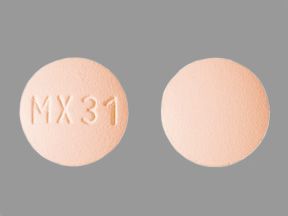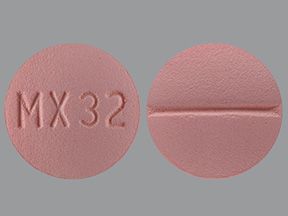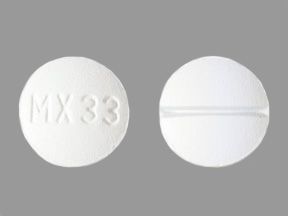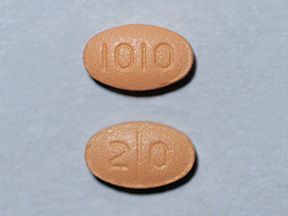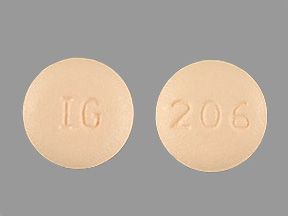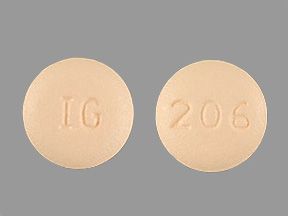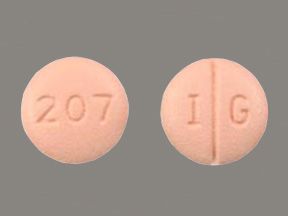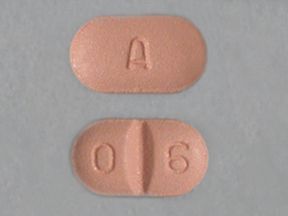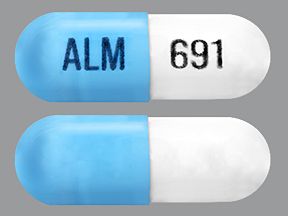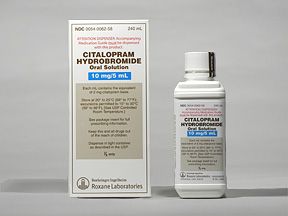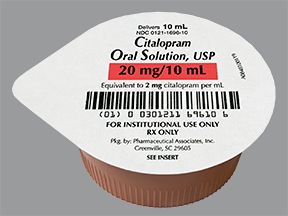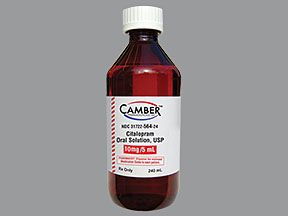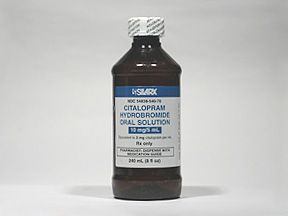Key takeaways
- Citalopram oral tablet is a prescription drug prescribed to treat depression.
- Citalopram belongs to a group of drugs called selective serotonin reuptake inhibitors (SSRIs). SSRIs work by increasing serotonin levels in the brain.
- Common side effects of citalopram include nausea, sleepiness, weakness, dizziness, and insomnia.
Citalopram oral tablet is a prescription drug that’s available as the brand-name drug Celexa. It’s also available as a generic drug. Generic drugs usually cost less. In some cases, they may not be available in every strength or form as the brand-name version.
Citalopram is also available as an oral solution. This article focuses on the oral tablet form of citalopram. For more information about citalopram oral solution, talk with your doctor or pharmacist.
Why it’s used
Citalopram is used to treat major depressive disorder, commonly referred to as depression. It may be used as part of a combination therapy. This means you may need to take it with other medications.
How it works
Citalopram is part of the antidepressant drug class called selective serotonin reuptake inhibitors (SSRIs). A class of drugs is a group of medications that work in a similar way. These drugs are often used to treat similar conditions.
SSRIs act in your brain to increase levels of a substance called serotonin. Having more serotonin in your brain can reduce symptoms of depression.
Citalopram oral tablet can cause mild or serious side effects. The following text contains some of the key side effects that may occur while taking citalopram. This section does not include all possible side effects.
For more information on the possible side effects of citalopram, or tips on how to manage a bothersome side effect, talk with your doctor or pharmacist.
More common side effects
In studies of citalopram, these were the more commonly reported side effects:
- nausea
- sleepiness
- weakness
- dizziness
- anxiousness
- difficulty sleeping
- sexual problems
- sweating
- shaking
- hunger
- dry mouth
- constipation
- diarrhea
- respiratory infections
- yawning
Serious side effects
Call your doctor right away if you have serious side effects. Call 911 if your symptoms feel life threatening or if you think you’re having a medical emergency. Serious side effects and their symptoms can include the following:
- Suicidal thoughts or actions. Symptoms can include:
- suicidal ideation or behavior
- acting on dangerous impulses
- acting aggressively or violently
- thoughts about suicide or dying
- new or worse depression
- new or worse anxiety or panic attacks
- agitation, restlessness, anger, or irritability
- difficulty sleeping
- Heart rhythm changes (long QT syndrome or Torsade de Pointes). Symptoms can include:
- chest pain
- fast or slow heart rate
- shortness of breath
- dizziness or fainting
- Serotonin syndrome. Symptoms can include:
- agitation
- hallucinations (seeing things that are not real)
- confusion or difficulty thinking
- coordination problems or muscle twitching (overactive reflexes)
- racing heartbeat
- high or low blood pressure
- sweating or fever
- nausea or vomiting
- diarrhea
- muscle rigidity
- Mania. Symptoms can include:
- greatly increased energy
- severe difficulty sleeping
- racing thoughts
- reckless behavior
- unusually grand ideas
- excessive happiness or irritability
- Seizures. Symptoms can include:
- convulsions
- falls
- sudden loss of muscle tone
- sudden loss of awareness of surroundings
- sudden loss of urine or bowel control
- Visual problems. Symptoms can include:
- eye pain
- blurred vision
- double vision
- swelling or redness in or around your eyes
- Low sodium levels in the blood. Symptoms can include:
- headache
- weakness or feeling unsteady
- confusion, problems concentrating, or thinking or memory problems
- Increased risk of bleeding.
Citalopram oral tablet can interact with several other medications. Different interactions can cause different effects. For instance, some can interfere with how well a drug works, while others can cause increased side effects.
The following text gives examples of medications that can interact with citalopram. This list does not contain all drugs that may interact with citalopram.
Before taking citalopram, be sure to tell your doctor and pharmacist about all prescription, over-the-counter, and other drugs you take. Also tell them about any vitamins, herbs, and supplements you use. Sharing this information can help you avoid potential interactions.
If you have questions about drug interactions that may affect you, ask your doctor or pharmacist.
Drugs that increase serotonin levels
A possibly life threatening condition called serotonin syndrome can occur if you take citalopram with other drugs that can increase serotonin levels in your body. This may be more likely when one of the drugs is first started or after dose increases. Examples of these drugs include:
- buspirone
- fentanyl
- linezolid (Zyvox)
- lithium (Lithobid)
- triptans, such as:
- amphetamines, such as:
- dextroamphetamine
- amphetamine (Evekeo)
- lisdexamfetamine (Vyvanse)
- methylene blue (ProvayBlue)
- tricyclic antidepressants, such as:
- monoamine oxidase inhibitors (MAOIs), such as:
- isocarboxazid (Marplan)
- phenelzine (Nardil)
- selegiline (Zelapar)
- tranylcypromine (Parnate)
- tramadol
St. John’s wort may also increase the risk of serotonin syndrome if taken together with citalopram. St. John’s wort is an herbal supplement that some people take to ease symptoms of depression.
Drugs that affect heart rhythm
Citalopram should not be used with other drugs that affect your heart rhythm. Taking both citalopram and these drugs may increase your risk of heart rhythm changes that could be dangerous. Examples of these drugs include:
- amiodarone (Pacerone)
- chlorpromazine
- methadone (Methadose)
- moxifloxacin
- pentamidine (Pentam)
- pimozide
- procainamide
- quinidine
- sotalol (Betapace)
- thioridazine
Drugs that increase bleeding risk
Citalopram and other antidepressant medications may increase your risk of bleeding or bruising. This risk is further increased if you’re also taking other medicines that increase bleeding risk.
Other drugs that increase your risk of bleeding include:
- blood thinners, such as:
- warfarin (Jantoven)
- enoxaparin (Lovenox)
- dalteparin (Fragmin)
- heparin
- nonsteroidal anti-inflammatory drugs, such as:
- aspirin
Tricyclic antidepressants (TCAs)
Caution should be used when taking citalopram with a TCA. This can result in higher levels of the TCA in your body and more side effects. TCAs include:
- amitriptyline
- imipramine
- nortriptyline
Taking TCAs with citalopram can also increase your risk of serotonin syndrome. For more information, see the “Drugs that increase serotonin levels” section earlier.
Drugs that cause sedation or drowsiness
Taking citalopram may increase the effects of drugs that cause sedation or drowsiness. Examples of these drugs include:
- lorazepam (Ativan)
- alprazolam (Xanax)
- diazepam (Valium)
- midazolam (Nayzilam)
- temazepam (Restoril)
- zolpidem (Ambien)
Cytochrome P450 2C19 inhibitors
Cytochrome P450 2C19 is a protein in your body that often helps to break down drugs, including citalopram. Some drugs are known to inhibit (slow down) the actions of this protein. When citalopram and drugs that slow down the actions of this protein are taken together, it may result in an amount of citalopram in your body that is too high.
Examples of cytochrome P450 2C19 inhibitors include:
- cimetidine (Tagamet HB)
- chloramphenicol
- fluvoxamine (Luvox)
- omeprazole (Nexium)
- modafinil (Provigil)
The citalopram dosage your doctor prescribes will depend on several factors. These include:
- your age
- the condition being treated
- how severe your condition is
- other medical conditions you have
- how you react to the first dose
Typically, your doctor will start you on a low dosage and adjust it over time to reach the dosage that’s right for you. They’ll ultimately prescribe the smallest dosage that provides the desired effect.
The following information describes dosages that are commonly used or recommended. However, be sure to take the dosage your doctor prescribes for you. Your doctor will determine the best dosage to suit your needs.
Forms and strengths
Brand: Celexa
- Form: oral tablet
- Strengths: 10 milligrams (mg), 20 mg, 40 mg
Generic: citalopram
- Form: oral tablet
- Strengths: 10 mg, 20 mg, 40 mg
Dosage for treatment of depression
Adult dosage (ages 18 to 60 years)
- The starting dose is 20 mg, taken once per day.
- Your doctor may increase the dose. Doses should not be increased more than once per week.
- The maximum dose is 40 mg, taken once per day. You should not take more than 40 mg per day as higher doses increase the risk of long QT syndrome.
Child dosage (ages 0 to 17 years)
It has not been confirmed that citalopram is safe and effective for use in people younger than 18 years.
Older adult dosage (ages 61 years and older)
- If you are an older adult, you should not take more than 20 mg once per day. The kidneys of older adults may not work as well as they used to. This can cause the body of an older adult to process drugs more slowly. As a result, more of a drug stays in their body for a longer time. This increases the risk of side effects.
- Your doctor may start you on a lowered dose or a different medication schedule. This can help keep levels of this drug from building up too much in your body.
Special considerations
- Cytochrome P450 2C19 poor metabolizers: Cytochrome P450 2C19 is a protein in the body that often helps to break down drugs, including citalopram. People who do not have very many 2C19 proteins or have less activity of their 2C19 proteins are called poor metabolizers of this protein. Poor metabolizers of cytochrome P450 2C19 should not take more than 20 mg of citalopram once per day.
- People with liver disease: Citalopram is processed by the liver. If you have liver problems, the levels of this drug in your body might increase. As a result, you may have more side effects. People with liver disease should not take more than 20 mg of citalopram once per day.
Stopping citalopram
You should not stop taking citalopram without talking with your doctor. Stopping citalopram too quickly can cause serious symptoms such as:
- anxiety or irritability
- feeling restless
- changes in sleep habits
- headache
- sweating
- nausea
- dizziness
- electric shock-like sensations
- shaking
- confusion
Your doctor may ask you to reduce the dose gradually instead of quickly stopping the medication if these symptoms occur.
FDA warning: Suicidal thoughts or actions
This drug has a boxed warning. A boxed warning is the most serious warning from the Food and Drug Administration (FDA). Boxed warnings alert doctors and patients about drug effects that may be dangerous.
Citalopram use may increase suicidal thoughts or actions in some children, teenagers, or young adults within the first few months of treatment or when the dose is changed. Watch for these changes and call your doctor right away if you notice new or sudden changes in mood, behavior, actions, thoughts, or feelings, especially if they’re severe.
Heart rhythm changes warning
Citalopram use can cause heart rhythm changes called long QT syndrome or Torsade de Pointes, which can be fatal.
Taking with monoamine oxidase inhibitors warning
Unless directed by your doctor, you should not take a monoamine oxidase inhibitor (MAOI) while you take citalopram or within 2 weeks of stopping citalopram. Also, you should not start citalopram within 2 weeks of stopping an MAOI.
Taking citalopram and an MAOI too close together in time could lead to a life threatening condition called serotonin syndrome. (For a list of symptoms for this side effect, see the “Citalopram side effects” section earlier in this article.)
Taking with pimoxide warning
Taking citalopram and pimozide together can cause serious heart problems.
Allergy warning
Citalopram can cause a severe allergic reaction. Symptoms can include:
- difficulty breathing
- swelling of your face, tongue, eyes, or mouth
- rash, hives (itchy welts) or blisters, alone or with fever or joint pain
If you have an allergic reaction, call your doctor or local poison control center right away. If your symptoms are severe, call 911 or go to the nearest emergency room.
You should not take this drug again if you’ve ever had an allergic reaction to it. Taking it again could be fatal.
Alcohol interaction
You should not consume alcohol during citalopram treatment. Citalopram can cause sleepiness, which may affect your ability to make decisions, think clearly, or react quickly. Drinking alcohol can increase these effects.
Warnings for people with certain health conditions
For people with heart problems: You should not take citalopram if you have a heart problem. Taking citalopram may put you at higher risk of a serious heart rhythm change called long QT syndrome, which can cause sudden death. People with a slow heart rate, recent heart attack, or severe heart failure should also not take citalopram.
For people with low potassium levels: You should not take citalopram if you have low potassium levels. Taking citalopram and having low levels of potassium may put you at higher risk of a serious heart rhythm change called long QT syndrome.
For people with low magnesium levels: You should not take citalopram if you have low magnesium levels. Taking citalopram and having low levels of magnesium may put you at higher risk of long QT syndrome.
For people with kidney disease: Talk with your doctor before taking citalopram if you have kidney disease. This drug may build up and cause more side effects in people with severe kidney disease.
For people with liver disease: Citalopram is processed by the liver. If you have liver disease, the levels of this drug in your body might increase. You may have more side effects as a result. People with liver disease should not take more than 20 mg of citalopram per day.
For people with a history of seizure disorder: Citalopram can increase the risk of seizures. Talk with your doctor before taking this drug if you have a history of seizures.
Warnings for other groups
For pregnant people: There have not been enough studies done in humans to be certain how the drug might affect the fetus. But animal studies suggest that the drug may cause harm to a fetus.
Talk with your doctor if you’re pregnant or planning to become pregnant. This drug should be used only if the potential benefit justifies the potential risk to the fetus.
For people who are breastfeeding: Citalopram passes into breast milk and may cause side effects in a child who is breastfed. Talk with your doctor if you breastfeed your child. You may need to decide whether to stop breastfeeding or stop taking this medication.
For children: Citalopram can cause changes in appetite or weight. Children and adolescents should have height and weight monitored during treatment.
Citalopram oral tablet is used for long-term treatment. It comes with risks if you do not take it as prescribed.
If you stop taking the drug or do not take it at all: Your condition will not get better. It may even worsen.
If you miss doses or do not take the drug on schedule: Your medication may not work as well or may stop working completely. For this drug to work well, a certain amount needs to be in your body at all times.
If you take too much: You could have symptoms of serotonin syndrome. These include:
- agitation
- hallucinations (seeing things that are not real)
- confusion or difficulty thinking
- coordination problems or muscle twitching (overactive reflexes)
- racing heartbeat
- high or low blood pressure
- sweating or fever
- nausea or vomiting
- diarrhea
- muscle rigidity
If you have any of these symptoms, call your doctor or go to the nearest emergency department.
What to do if you miss a dose: Take your dose as soon as you remember. But if you remember just a few hours before your next scheduled dose, take only one dose. Never try to catch up by taking two doses at once. This could result in dangerous side effects.
How to tell whether the drug is working: You will know that citalopram is working if you notice that your depression symptoms are less severe or happen less often. You may not notice any change in your condition for the first several weeks that you take this drug. Sometimes citalopram can take up to 2 months to start working.
Whether you have health insurance or not, cost may be a factor when you’re considering citalopram. What you’ll pay for citalopram may depend on several things, such as your treatment plan and the pharmacy you use.
- Comparing pharmacies: The price of citalopram may vary depending on which pharmacy you use. As a result, it can help to compare prices across pharmacies to find the lowest cost.
- Drug coupons: You may be able to find drug coupons on prescription discount websites that can reduce the cost of your medication. These coupons cannot be used with insurance copays or benefits. However, the discounted price may be lower than what you would pay through insurance.
- Financial assistance: Some websites provide details about drug assistance programs, ways to make the most of your insurance coverage, and links to savings cards and other services. Two such websites are:
Keep these considerations in mind if your doctor prescribes citalopram oral tablet for you.
General
- You can take citalopram with or without food.
- You can cut or crush the tablet.
Storage
- Store citalopram tablets at a room temperature between 68ºF and 77°F (20°C and 25°C).
- The tablets can temporarily be stored at temperatures between 59ºF and 86°F (15ºC and 30°C).
- Keep this drug away from high temperatures.
- You should not store this medication in moist or damp areas, such as bathrooms.
- Keep the bottle tightly closed.
Refills
A prescription for this medication is refillable. You should not need a new prescription for this medication to be refilled. Your doctor will write the number of refills authorized on your prescription.
Travel
When traveling with your medication:
- Always carry your medication with you. When flying, never put it into a checked bag. Keep it in your carry-on bag.
- You should not worry about airport X-ray machines. They cannot hurt your medication.
- You may need to show airport staff the pharmacy label for your medication. Always carry the original prescription-labeled box with you.
- You should not put this medication in your car’s glove compartment or leave it in the car. Be sure to avoid doing this when the weather is very hot or very cold.
Clinical monitoring
You and your doctor should monitor certain health issues. This can help make sure you stay safe while you take this drug. These issues include:
- Mental health and depression: Your doctor will monitor your symptoms of depression to make sure that citalopram is working. They will also monitor you for suicidal thoughts or actions, especially during the first few months after starting citalopram or after dose changes.
- Electrolytes: Your doctor may also check the amount of potassium, magnesium, or salt (sodium) in your body at the start of treatment and at other times while you’re taking citalopram.
- Heart rhythm: If you have a risk of long QT syndrome, your doctor may also check your heart rhythm using a test called an electrocardiogram (EKG).
There are other drugs available to treat your condition. Some may be better suited for you than others. Talk with your doctor about other drug options that may work for you.
Disclaimer: Healthline has made every effort to make certain that all information is factually correct, comprehensive, and up to date. However, this article should not be used as a substitute for the knowledge and expertise of a licensed healthcare professional. You should always consult your doctor or another healthcare professional before taking any medication. The drug information contained herein is subject to change and is not intended to cover all possible uses, directions, precautions, warnings, drug interactions, allergic reactions, or adverse effects. The absence of warnings or other information for a given drug does not indicate that the drug or drug combination is safe, effective, or appropriate for all patients or all specific uses.





